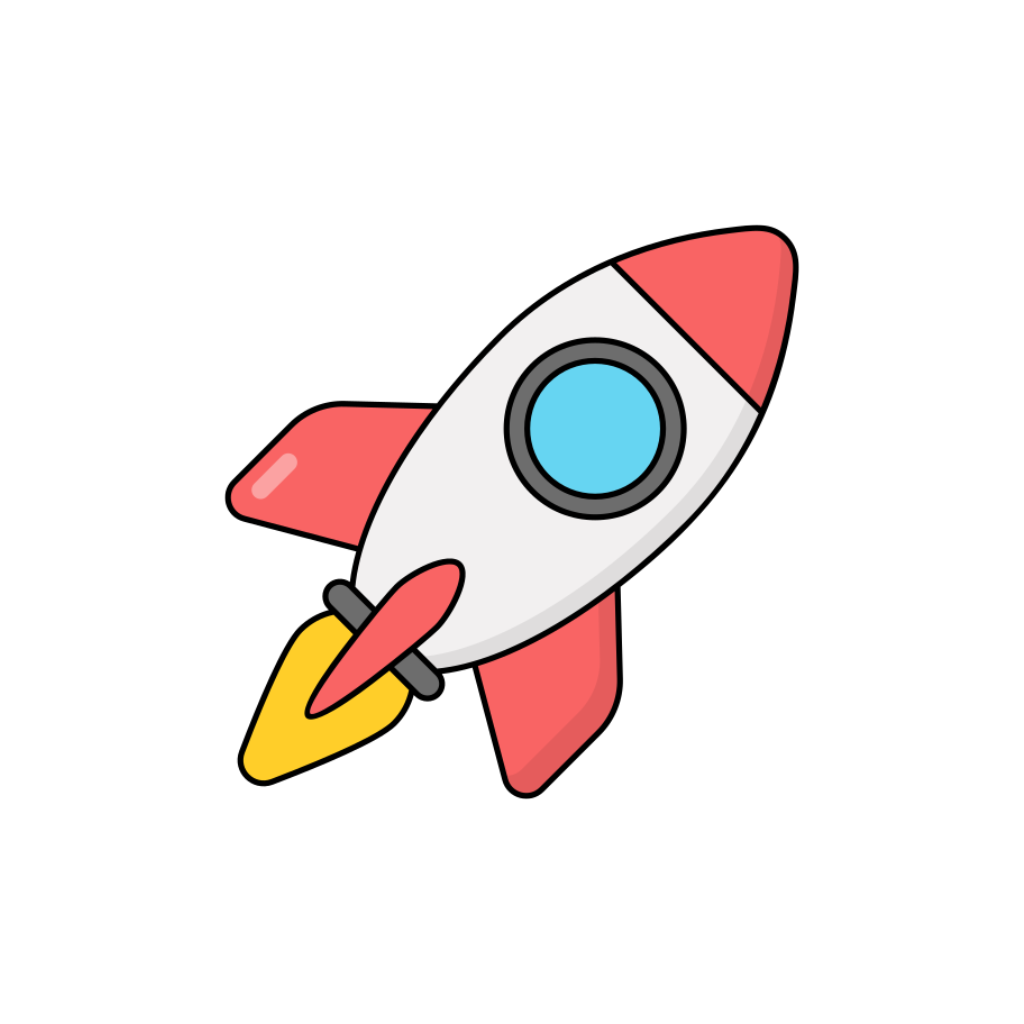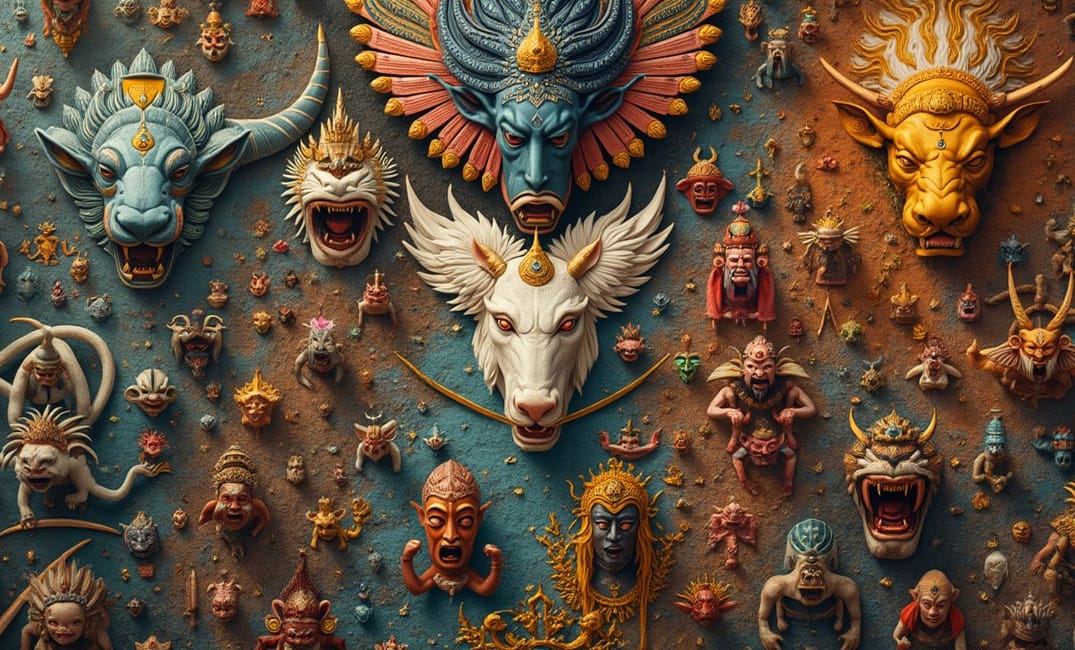Introduction: The Tapestry of Myth and Legend
Myths and legends form the bedrock of human culture, shaping collective consciousness and societal values across time. These stories, passed down through generations, convey moral lessons, human fears, and aspirations, offering insights into how ancient peoples understood the world and their place within it. Myths and legends, whether telling of gods and heroes or monstrous adversaries and perilous quests, reveal the tapestry of imagination and belief that defines cultures. This entry delves into the enduring legacy of these narratives, exploring their roles in shaping civilizations and their continued influence in contemporary culture.
The Birth of Myth: Creation Stories and Cosmogonies
Origins of the Universe: Creation Myths Across Cultures
- The Mesopotamian Enuma Elish: The Babylonian creation myth, Enuma Elish, narrates cosmic battles where primal gods create the universe. It reflects themes of chaos versus order, establishing the divine hierarchy and human destinies within Mesopotamian culture.
- Earth’s Emanations: Maori Origins: In Maori mythology, Rangi and Papa—the Sky Father and Earth Mother—were separated by their children, bringing light to the world. This tale reflects humanity’s deep connection to natural environments, emphasizing kinship with the earth.
The Birth of Humanity: Contrast and Connection
- African Creation Narratives: Diverse African tribes depict creation through figures like the Yoruba deity Obatala, who shapes humanity from clay. These stories highlight not only divine ingenuity but the intrinsic social philosophies that guide tribal life.
- Norse Creation from Ice and Fire: In Norse myth, Ymir's body parts fashioned the earth following a primordial battle. Such tales immortalize the harsh, rugged landscapes of Norse origin, intertwining physical survival with mythos-driven perseverance.
Heroes and Monsters: Classical Mythic Archetypes
The Hero’s Journey: Trials and Transformations
- Greek Heroes and their Epic Quests: Figures like Hercules and Odysseus embody the hero archetype, overcoming trials through strength and wit. Their narratives explore themes of fate, honor, and human imperfections within Greek cultural contexts.
- The Epic of Gilgamesh: Sumerian Aspirations: The Epic of Gilgamesh, regarded as one of the earliest hero tales, captures the quest for immortality, exploring human vulnerabilities and the relentless pursuit of legacy.
Enigmatic Beasts: Symbols of Nature and Fear
- The Celtic Otherworld and Monsters: Celtic tales brim with monsters like the banshee or kelpie—transcendent bridges between the natural and supernatural worlds, engaging with cultural metaphors of environmental awe and trepidation.
- Aztec Mythology: Quetzalcoatl and Conflict: The feathered serpent god, Quetzalcoatl, embodies duality—existence's harmony and chaos—interweaving human civilization phases with tumultuous cosmic alignments.
Divine and Mythic Interactions: Gods Reflecting Humanity
Pantheons: Structures of Belief and Power
- The Hindu Devas and Asuras: Hindu mythology, with its elaborate pantheons, reflects cosmic battles and moral dichotomies. These stories, balancing divine benevolence and malice, provide frameworks for contemporary spiritual practices.
- Egyptian Deities and Eternity: Egyptian myths center deities such as Osiris and Isis, scripting narratives of life, death, and rebirth. They emphasize the eternal cycles fundamental to Egyptian identity and their societal structures.
Emissaries and Tricksters: Questioning Authority
- Anansi and the Art of Deception: The West African trickster, Anansi, uses cunning to outwit even superior beings, highlighting the value of wit and ingenuity over brute strength.
- The Nordic Loki: Chaotic Challenges: Loki's role in Norse mythology challenges established order, bringing transformation through mischief and chaos, reflecting human ambiguity and complexities in moral narratives.
Sagas and Epics: Cultural Histories Embodied in Literature
Epic Narratives: Civilization Reflections
- Homer’s Iliad and Odyssey: These Greek epics, chronicling myths of gods and heroes, symbolize cultural ideals and societal motivations through grand narratives reflecting timeless struggles of war and peace.
- The Ramayana and Mahabharata: Indian epics filled with divine interactions, moral dilemmas, and philosophical inquiries form the foundation of Indian cultural and ethical thought, perpetuating values through generations.
Saga Literature: Unveiling Historical Context
- Icelandic Sagas: These narratives recount Norse adventures and conflicts, blending history and myth into cohesive socio-cultural commentaries reflecting Viking life, ethics, and law.
- Beowulf and Anglo-Saxon Heritage: Beowulf, blending mythic elements with historical undercurrents, weaves together narratives of courage and leadership that define Anglo-Saxon cultural heritage.
Mythic Influence in Contemporary Media: Mythology's New Horizons
Mythological Themes in Cinema and Literature
- Fantasy Literature and Mythic Foundations: Works like J.R.R. Tolkien’s "The Lord of the Rings" draw heavily from Norse and Celtic myths, crafting worlds that captivate with timeless tales of courage and moral struggle.
- Cinematic Mythologies: Films such as "Star Wars" reflect Campbell's “Hero's Journey,” borrowing from mythic structures to explore contemporary moral and philosophical dilemmas within space-faring fantasy realms.
Myth in Modern Psychological Interpretation
- Jungian Perspectives and Archetypes: Carl Jung theorized that myths are manifestations of collective unconscious archetypes, shaping individual psyches and societal norms.
- Therapeutic Narratives and Healing: Myths serve therapeutic roles, offering narratives of transformation that aid personal development and psychological healing by reflecting internal journeys.
Stories Reimagined: Myth and Technology in a Digital Age
Virtual Mythmaking: Digital Narratives and Games
- Gaming and Interactive Myths: Video games, like "God of War," integrate mythological contexts within interactive frameworks, offering players immersive storytelling and agency in reshaping traditional tales.
- Digital Art and Mythological Themes: Artists employ digital platforms to reimagine myths, blending traditional art and modern technology, thus enacting dialogues between past and future cultural interpretations.
Collaborative Narratives: The Internet’s Storytelling Revolution
- Online Communities and Shared Mythos: Platforms like fan fiction sites democratize myth creation, allowing collaborations across global audiences, revitalizing ancient stories with contemporary perspectives.
- Social Media and Memetic Evolution: Myths evolve through memes, adapting to digital environments where viral stories encapsulate modern archetypal themes, continuing an age-old tradition of communal storytelling.
Conclusion: The Eternal Dance of Myth and Reality
Myths and legends are woven into the fabric of human identity, their narratives a mirror reflecting hopes, complexities, and cultural evolution. As continuous sources of inspiration, these stories traverse epochs, offering frameworks through which societies comprehend existence and navigate inquiries into morality, destiny, and self.
"In retelling ancient stories, we discover the eternal truths of humanity—myths are the ever-unfolding fables sculpting our past, guiding our present, and charting our quest for understanding the universe’s deepest mysteries."
NARRATIVES, MYTHS, ARCHETYPES, LEGENDS, HEROES, CREATION, DIGITAL AGE, STORYTELLING, CULTURES, MYTHOLOGY

